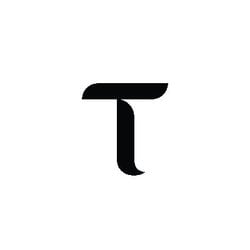The Rise of a Beloved Icon
In the world of fantasy and gaming, few symbols have captured the imagination of fans quite like the Eye of Horus. This ancient Egyptian emblem has evolved from a sacred icon to a ubiquitous logo, adorning merchandise, tattoos, and even cryptocurrency. https://eyeofhorusmegaways.net/ But what’s behind its enduring appeal? From its origins as a mythical eye to its modern-day interpretations, we’ll explore how the Eye of Horus became an unlikely fan favorite.
A Glimpse into Ancient Egypt
The Eye of Horus is rooted in ancient Egyptian mythology, where it was associated with the god Horus, son of Osiris and Isis. As one of the most powerful deities, Horus embodied kingship, protection, and goodness. His story revolves around a battle with his uncle Seth, who murdered Osiris and usurped the throne. Horus avenged his father’s death by defeating Seth and reclaiming Egypt.
In this epic struggle, Horus lost an eye in combat, which was later restored to him by Thoth, god of wisdom and magic. The resulting Eye of Horus symbolized the reunification of opposites – light and darkness, chaos and order. It represented protection from harm, good fortune, and royal authority.
From Sacred to Symbolic
In ancient Egypt, the Eye of Horus adorned temples, tombs, and artifacts as a visual representation of divine power. Its significance extended beyond mythology; it was also used in rituals to ensure the pharaoh’s safe passage into the afterlife. However, with the decline of Egyptian civilization, the icon’s spiritual significance waned.
During the Middle Ages, European alchemists reinterpreted the Eye of Horus as a symbol of enlightenment and spiritual growth. They believed that by studying the intricacies of its design, one could unlock the secrets of the universe. This mystical fascination laid the groundwork for modern interpretations, where the Eye of Horus has become synonymous with protection, strength, and intuition.
The Rise of Esotericism
As the 20th century dawned, Western esoteric traditions began to revive interest in ancient mythology. Occultists like Aleister Crowley and Dion Fortune drew upon Egyptian symbolism, including the Eye of Horus. They saw it as a representation of divine energy and a gateway to higher states of consciousness.
This renewed attention spawned a cottage industry of spiritual interpretations, from self-help guides to New Age rituals. Merchants capitalized on the trend by selling "protective" talismans, amulets, and artwork featuring the Eye of Horus. As its popularity grew, the icon transcended its mystical roots to become an ubiquitous logo.
Mainstream Popularity
In the 1990s and early 2000s, the internet and social media catapulted the Eye of Horus into mainstream consciousness. Social networkers began sharing images and memes featuring the symbol, often accompanied by affirmations or motivational quotes. This viral spread introduced the icon to a broader audience, untethered from its esoteric associations.
Gaming companies took notice of this momentum, incorporating the Eye of Horus as a logo for various games and merchandise lines. Its widespread adoption blurred boundaries between mythology and commercialism, solidifying the symbol’s status as a cultural touchstone.
The Eye in Cryptocurrency
A 2019 crypto-coin called "Horus" capitalized on the iconic symbol by using its image on their branding and marketing materials. This decision sparked controversy among enthusiasts, who questioned whether associating the sacred Eye of Horus with cryptocurrency was an affront to its spiritual significance.
Despite this debate, the coin’s creators saw it as a nod to the mythology that inspired modern interpretations. By recontextualizing the symbol in the realm of digital currencies, they underscored the Eye of Horus’ adaptability and versatility.
Tattoos, Artwork, and Cultural Iconography
The proliferation of tattoos featuring the Eye of Horus attests to its enduring appeal among fans worldwide. From avant-garde art pieces to tribal-inspired designs, this iconic symbol has become an integral part of personal expression and self-identification.
Merchandisers have cornered the market on licensed products emblazoning the Eye of Horus – t-shirts, mugs, jewelry, and even kitchen utensils. Online marketplaces now offer a vast array of items featuring the image, further solidifying its place as an instantly recognizable logo.
Influence and Interpretations
The Eye of Horus’ versatility has led to diverse interpretations across various disciplines:
- Protection : As an ancient symbol of safeguarding, it’s often used in contexts related to security, self-defense, or warding off negative energy.
- Intuition : Modern fans associate the icon with heightened perception, extrasensory abilities, and spiritual growth.
- Feminine Power : Some attribute feminine energies and goddess associations to the Eye of Horus, reflecting a shift towards embracing female deities in modern esotericism.
- Esoteric Significance : Occultists continue to explore its mystical properties, believing it holds secrets for unlocking higher consciousness.
Beyond Symbolism: Cultural Significance
The Eye of Horus’ success extends beyond the realm of iconography; it has tapped into a deeper desire for meaning and connection in modern society. As people navigate uncertain times, they turn to symbols like the Eye of Horus as beacons of hope, protection, or inspiration.
From Ancient Gods to Modern Icon
As this journey comes full circle, one truth becomes clear: the Eye of Horus has transcended its origins as a mythical eye to become an integral part of contemporary pop culture. It has evolved from a symbol associated with royalty and spirituality to an emblem for modern-day aspirations – security, intuition, and self-discovery.
What’s next for this ubiquitous logo? Will it continue to adapt and evolve in response to shifting cultural currents, or will its meanings solidify as more people claim the Eye of Horus as their own?













